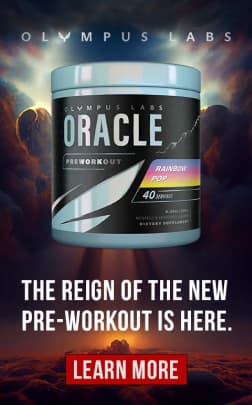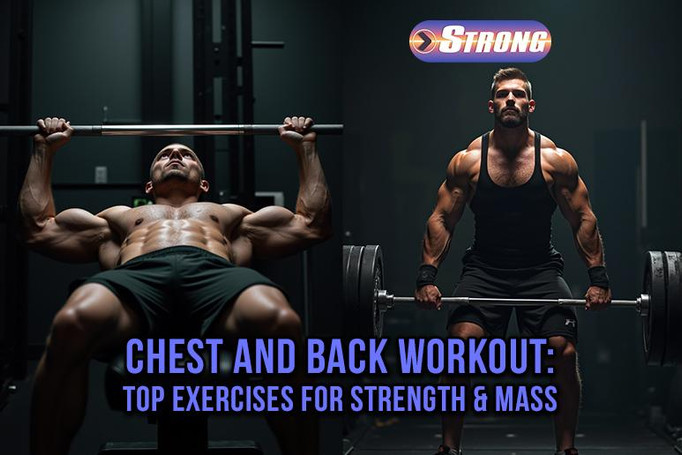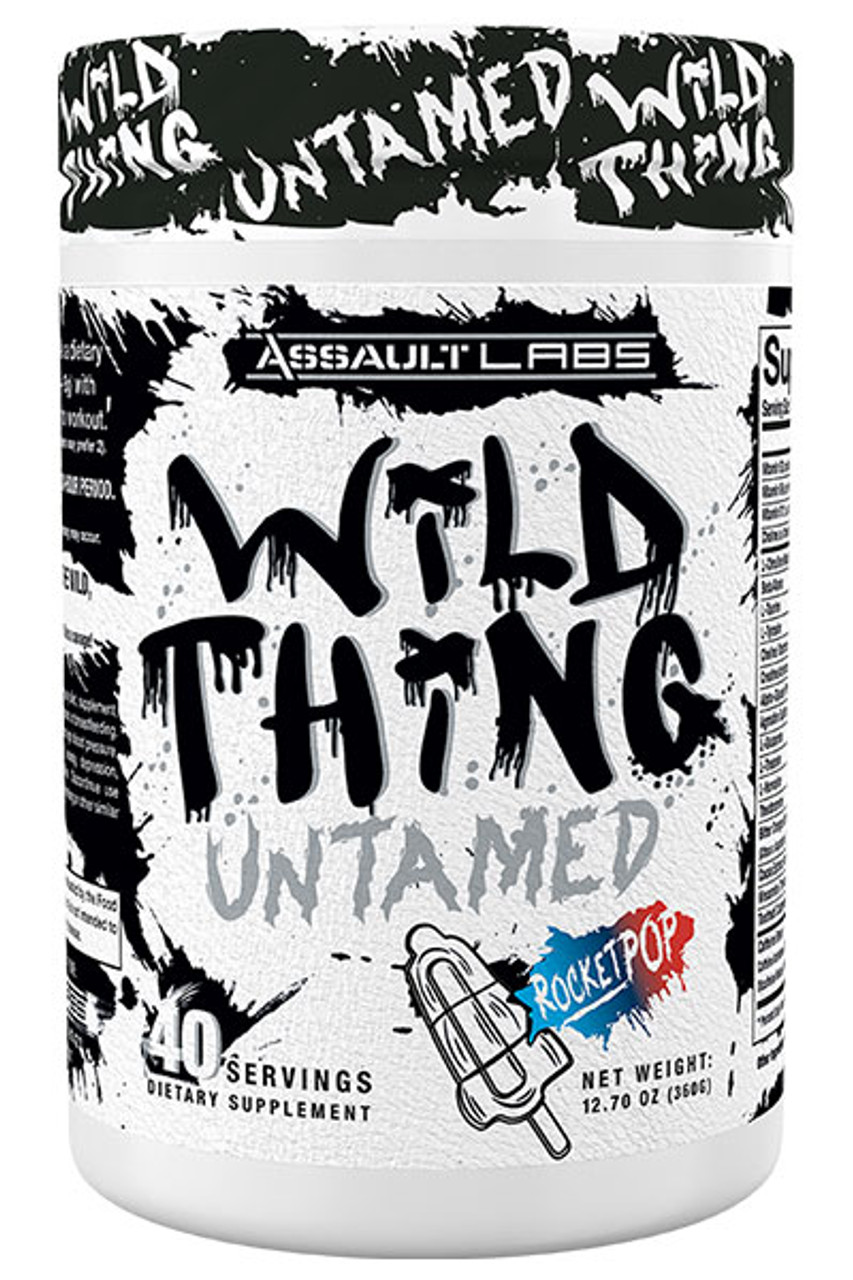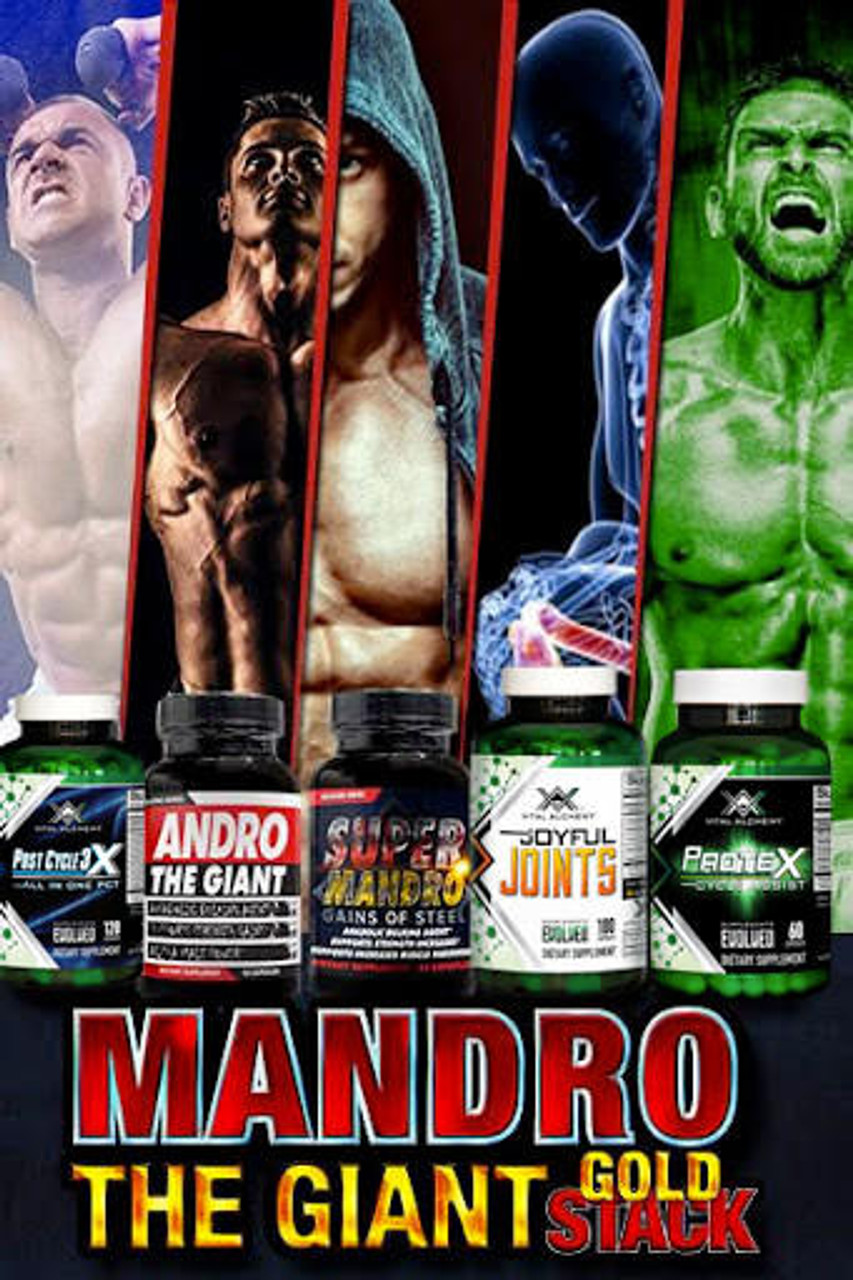Chest and Back Workout: Top Exercises For Strength and Mass
Posted by Leonard Shemtob on Feb 11, 2025
Introduction
A well-structured chest and back workout is one of the most effective training splits for building upper body strength and muscle mass. Since these two muscle groups work as opposing forces—pushing (chest) and pulling (back)—training them together maximizes muscle activation, improves balance, and increases overall workout efficiency. Whether your goal is to gain size, develop strength, or enhance endurance, this guide will provide the best exercises, workout structures, and supplement recommendations to help you achieve optimal results.
By incorporating progressive overload, proper exercise selection, and strategic training techniques, you can unlock superior muscle hypertrophy and functional strength. Below, you'll find expert training tips, top exercises for chest and back, and the best supplements to fuel your performance and recovery.
Short Summary
- Why Train Chest and Back Together? Learn the benefits of pairing these muscle groups for balanced development.
- Best Chest and Back Exercises: Discover the most effective lifts for upper body size and strength.
- How to Structure Your Workout: Follow expert-designed routines to match your goals.
- Pro Tips for Better Results: Improve form, optimize recovery, and maximize muscle activation.
- Common Mistakes to Avoid: Learn how to prevent setbacks and ensure consistent progress.
- Best Supplement Stack for Chest and Back Training: Support muscle growth, endurance, and recovery with top-tier supplements.
- Maximize Your Chest & Back Gains: Buy the Best Natural Strength & Muscle-Building Supplement and Start Seeing Faster & More Noticeable Results From Your Chest & Back Workouts!
Why Train Chest and Back Together?
Pairing chest and back exercises in the same workout is an efficient way to build a strong, well-balanced upper body. These muscle groups work as antagonists, meaning when one contracts, the other stretches. This pairing allows for better recovery between sets, increased blood flow (known as "superset pump"), and more effective training sessions.
Key Benefits:
- Balanced Upper Body Development: Strengthens both pushing and pulling muscles for proportional growth.
- Enhanced Strength and Power: Improves pressing and pulling movements for better overall performance.
- Greater Training Efficiency: Allows for higher training volume without overloading one muscle group.
- Increased Caloric Burn: Engaging large muscle groups in one session leads to a higher metabolic demand.
- Improved Mind-Muscle Connection: Helps lifters focus on proper form and activation for both pushing and pulling movements.
By structuring your workout with compound and isolation movements, you can maximize hypertrophy and overall strength while keeping your training both efficient and effective.
Best Chest and Back Exercises
A well-rounded chest and back workout should incorporate a mix of compound movements and isolation exercises to target all major muscles effectively. The chest muscles, primarily the pectoralis major and minor, are responsible for pressing movements, while the back muscles, including the latissimus dorsi, trapezius, and rhomboids, control pulling motions. By strategically pairing these two muscle groups, you can achieve balanced upper-body development while improving strength, endurance, and muscle hypertrophy.
Best Chest Exercises
1. Barbell Bench Press
The barbell bench press is the most fundamental compound exercise for developing overall chest size and strength. It activates the pectorals, shoulders, and triceps, making it a staple in upper body workouts.
Muscles Worked:
- Pectoralis Major & Minor – Primary movers for pressing the bar upward.
- Anterior Deltoids – Assist in pushing the bar off the chest.
- Triceps Brachii – Aid in locking out the lift.
How to Perform:
- Lie on a flat bench with feet planted firmly on the ground.
- Grip the barbell slightly wider than shoulder-width.
- Unrack the bar and lower it to the mid-chest with control.
- Press the bar back up until arms are fully extended.
- Maintain tight shoulder blades and a stable core throughout.
2. Incline Dumbbell Press
The incline dumbbell press places greater emphasis on the upper chest, helping develop upper pec thickness.
Muscles Worked:
- Upper Pectoralis Major – Primary muscle engaged due to the incline angle.
- Front Deltoids – Assist in pressing the weight upward.
- Triceps – Support the lockout phase of the movement.
How to Perform:
- Set a bench at a 30-45° incline.
- Hold dumbbells at shoulder height with a neutral grip.
- Press the weights overhead, bringing them together at the top.
- Slowly lower the dumbbells to shoulder level.
- Keep your chest tall and core engaged throughout.
3. Decline Barbell Press
The decline bench press targets the lower chest, allowing for heavier weight loads.
Muscles Worked:
- Lower Pectoralis Major – Main muscle targeted.
- Triceps – Help extend the arms during the press.
- Anterior Delts – Assist in pressing the weight.
How to Perform:
- Lie on a decline bench with feet secured.
- Grip the barbell slightly wider than shoulder-width.
- Lower the bar to the lower chest.
- Press the bar up while keeping shoulder blades retracted.
- Maintain a controlled pace throughout the movement.
4. Dumbbell Flyes
This biceps isolation exercise stretches and contracts the chest muscles, improving muscle hypertrophy.
Muscles Worked:
- Pectoralis Major – Responsible for horizontal adduction.
- Anterior Deltoids – Provide stabilization during the movement.
- Biceps Brachii – Act as secondary stabilizers.
How to Perform:
- Lie on a flat bench with dumbbells in hand.
- Start with arms extended above the shoulder joint.
- Lower the dumbbells in a wide arc, keeping a slight bend in the elbows.
- Bring the weights back together at the top.
- Focus on slow, controlled reps.
5. Dips (Chest-Focused)
Chest dips emphasize the lower chest, promoting muscle growth and endurance.
Muscles Worked:
- Lower Pectorals – Primary mover during the dip.
- Triceps – Assist in pushing the body up.
- Front Delts – Help stabilize the movement.
How to Perform:
- Grip parallel bars with a slight forward lean.
- Lower yourself until your elbows reach a 90° angle.
- Press back up to the starting position.
- Keep your core tight and chest engaged.
6. Dumbbell Pull-Overs
A versatile chest and back exercise that enhances rib cage expansion and strengthens the pectorals and lats simultaneously.
Muscles Worked:
- Pectoralis Major & Minor – Stretches and contracts the chest.
- Latissimus Dorsi – Engages during the pulling phase.
- Triceps & Core – Assist in stabilizing the movement.
How to Perform:
- Lie on a flat bench with a dumbbell held overhead.
- Keep arms slightly bent and lower the weight behind your head until you feel a stretch.
- Pull the dumbbell back to the starting position, contracting your chest and lats.
- Keep your core tight and avoid excessive arching of the lower back.
Best Back Exercises
1. Deadlifts
The deadlift is a full-body strength movement that builds the posterior chain and enhances multiple muscle groups.
Muscles Worked:
- Latissimus Dorsi – Supports the lift and maintains spinal stability.
- Erector Spinae Muscles – Help extend the back.
- Trapezius & Rhomboids – Assist with scapular control.
- Forearm Muscles – Strengthen grip.
How to Perform:
- Stand with feet hip-width apart.
- Grip the barbell with an overhand grip.
- Keep a neutral spine and pull the bar from the floor.
- Extend the hips forward at the top.
- Lower the weight under control.
2. Pull-Ups
An essential upper body exercise that develops lat width.
Muscles Worked:
- Latissimus Dorsi – Primary mover.
- Biceps Muscles – Assist in elbow flexion.
- Forearms – Improve grip strength.
How to Perform:
- Grab a pull-up bar with an overhand grip.
- Hang with arms straight and fully extended.
- Pull yourself up until your chin clears the bar.
- Lower back under control.
3. Bent-Over Rows
A compound exercise that improves upper back strength.
Muscles Worked:
- Trapezius & Rhomboids – Retract shoulder blades.
- Lats & Rear Delts – Control pulling motion.
- Biceps – Assist in the movement.
How to Perform:
- Hold a barbell with an overhand grip.
- Hinge forward, keep your knees bent slightly while maintaining a neutral spine.
- Row the bar to your lower ribcage.
- Squeeze shoulder blades together.
4. Lat Pulldown
An alternative to pull-ups that focuses on muscle hypertrophy.
Muscles Worked:
- Lats – Main pulling muscle.
- Biceps – Assist in the motion.
- Rotator Cuff Muscles – Stabilize the movement.
How to Perform:
- Sit down and grab the lat pulldown bar.
- Pull the bar to your upper chest.
- Slowly release to the starting position.
5. Seated Cable Rows
A controlled movement for back thickness.
Muscles Worked:
- Mid & Lower Traps – Assist in scapular retraction.
- Lats – Maintain tension.
- Forearms – Improve grip strength.
How to Perform:
- Sit with feet planted on the platform.
- Grab the handle and pull toward your waist.
- Keep elbows tight and squeeze the back.
6. T-Bar Rows
A great alternative to barbell rows.
Muscles Worked:
- Upper & Mid-Back – Main target muscles.
- Biceps – Assist in the movement.
- Core Muscles – Maintain stability.
How to Perform:
- Load the T-Bar row machine.
- Grip the handle and pull toward your chest.
- Lower the weight under control.
How to Structure Your Chest and Back Workout
A well-designed chest and back workout should focus on progressive overload, proper exercise sequencing, and strategic rep ranges based on your goals. Below are three structured workout routines for strength, hypertrophy, and endurance.
Strength-Focused Routine
This routine prioritizes compound lifts and heavy resistance to build maximum strength and power. Focus on low reps and high weight to improve your pressing and pulling capacity.
- Barbell Bench Press – 4 sets x 5 reps
- Weighted Pull-Ups – 4 sets x 5 reps
- Incline Dumbbell Press – 3 sets x 6-8 reps
- Barbell Bent-Over Rows – 3 sets x 6-8 reps
- Dumbbell Pull-Overs – 3 sets x 8 reps
- Deadlifts – 3 sets x 5 reps
Hypertrophy-Focused Chest & Back Routine
Designed for muscle growth, this workout utilizes moderate rep ranges, controlled negatives, and high volume to fully fatigue both the chest and back.
- Flat Dumbbell Press – 4 sets x 8-12 reps
- Lat Pulldown – 4 sets x 8-12 reps
- Incline Machine Press – 3 sets x 10-12 reps
- Seated Cable Rows – 3 sets x 10-12 reps
- Dumbbell Pull-Overs – 3 sets x 12 reps
- T-Bar Rows – 3 sets x 10 reps
Endurance-Focused Chest & Back Routine
This routine is structured to improve muscular endurance, conditioning, and work capacity through higher rep ranges and shorter rest periods.
- Push-Ups (Weighted or Bodyweight) – 4 sets x 15-20 reps
- Pull-Ups (Banded or Bodyweight) – 4 sets x 12-15 reps
- Dips (Chest-Focused) – 3 sets x 12-15 reps
- Seated Cable Rows – 3 sets x 12-15 reps
- Incline Dumbbell Press – 3 sets x 12 reps
- Face Pulls – 3 sets x 15 reps
Best Supplement Stack for Chest and Back Workouts
To maximize your chest and back gains, incorporating high-quality supplements can enhance strength, endurance, and recovery while supporting muscle growth. The following supplements are designed to help you push harder, recover faster, and build a powerful upper body.
1. AnaFuse by Vital Alchemy
AnaFuse is a natural muscle-building powerhouse designed to enhance strength, endurance, and recovery. With science-backed anabolic ingredients, AnaFuse promotes lean muscle growth and reduces muscle breakdown, making it the perfect supplement for intense chest and back training. Whether you’re pushing heavy bench press reps or grinding through pull-ups, AnaFuse ensures your body stays anabolic and primed for growth.
Key Benefits:
- Promotes lean muscle growth for a more developed chest and back.
- Enhances strength and endurance for better performance in compound lifts.
- Reduces muscle breakdown to keep you in an anabolic state.
- Speeds up muscle recovery, allowing you to train harder and more frequently.
- Boosts protein synthesis for superior muscle repair.
- Supports overall performance and athletic conditioning.
Key Ingredients:
- Epicatechin
- Turkesterone
- Eriobotrya Japonica Extract
- HICA
- Quercetin
- Vitamin D
2. Wild Thing by Assault Labs
Wild Thing is a high-powered pre-workout formulated to provide explosive energy, enhanced focus, and powerful muscle pumps—perfect for intense chest and back workouts. Whether you're loading up the barbell for heavy rows or chasing massive reps on the bench, Wild Thing helps you train at peak intensity without crashing.
Key Benefits:
- Boosts energy and focus for high-intensity training.
- Enhances muscle pumps and blood flow for better contractions.
- Increases strength and endurance to maximize heavy lifts.
- Delays muscle fatigue, allowing longer, more productive workouts.
- Improves mental clarity and workout intensity.
- Supports explosive power output for pressing and pulling movements.
Key Ingredients:
- L-Citrulline Malate
- Beta-Alanine
- Creatine Anhydrous
- Caffeine Anhydrous
- L-Theanine
- Huperzine A
- Alpha GPC
- Thinkamine
3. SuperHuman Post by Alpha Lion
SuperHuman Post is an advanced post-workout recovery formula designed to accelerate muscle repair, replenish nutrients, and promote faster recovery after intense workouts. It reduces soreness and helps you bounce back stronger after heavy pressing and pulling sessions.
Key Benefits:
- Accelerates muscle recovery and reduces post-workout soreness.
- Replenishes glycogen stores for better energy levels.
- Increases protein synthesis, promoting faster muscle growth.
- Enhances muscle hydration and repair.
- Supports strength gains and endurance for progressive overload.
- Improves nutrient absorption to fuel recovery.
Key Ingredients:
- Creatine Monohydrate
- Betaine Anhydrous
- Velositol
- Astragin
4. Aftershock Critical Mass by Myogenix
Aftershock Critical Mass is an elite mass gainer designed to fuel muscle growth, replenish glycogen stores, and optimize recovery. It provides high-quality protein, carbohydrates, and fast-absorbing nutrients, making it ideal for intense chest and back training where recovery is crucial.
Key Benefits:
- Supports rapid muscle growth and strength gains.
- Provides high-calorie nutrition for mass-building.
- Enhances muscle recovery with optimal macronutrient balance.
- Replenishes glycogen stores to sustain endurance.
- Improves muscle protein synthesis for better results.
- Boosts performance and power output in compound lifts.
Key Ingredients:
- Whey Protein Isolate & Concentrate
- Milk Protein Isolate
- Micronized Creatine Monohydrate
- MagnaPower Creatine
- Maltodextrin
- MCT Powder
- Glutamine
5. Mandro the Giant Gold Stack *(For Advanced Users Only)*
Mandro the Giant Gold Stack is an extreme anabolic cycle designed for serious lifters and bodybuilders looking to take their chest and back gains to the next level. This hormonal anabolic stack delivers massive muscle growth, increased strength, and faster recovery, making it perfect for those pushing heavy weights on pressing and pulling movements.
Disclaimer: This prohormone stack is only recommended for advanced weightlifters and bodybuilders who have experience with hormonal supplements. Proper on-cycle support and post-cycle therapy (PCT) are required for safe and effective use.
Key Benefits:
- Maximizes muscle mass for a thicker, more powerful upper body.
- Increases testosterone levels, enhancing overall strength and performance.
- Supports faster recovery, allowing more frequent intense training.
- Boosts vascularity and muscle definition.
- Enhances power output for bigger lifts.
- Reduces muscle breakdown, keeping you in an anabolic state.
Key Ingredients:
- 1-Andro
- 4-Andro
Frequently Asked Questions
Q: Should I include the dumbbell bench press in my chest and back workouts?
A: Yes! The dumbbell bench press is an excellent chest exercise that engages the pectoral muscles, shoulder muscles, and triceps, making it a key movement for upper body training. When performed correctly, it helps strengthen the pectoralis major muscle, improves muscle gains, and enhances pressing strength.
Q: Can I train my entire upper body by combining chest and back workouts?
A: Absolutely. Since the chest and back are opposing muscle groups, training them together ensures a balanced upper body workout. A well-structured superset workout can engage two major muscle groups efficiently, improving strength, endurance, and overall muscle building goals.
Q: What are the benefits of training chest and back together?
A: Training the chest muscles and back muscles together allows you to target major muscle groups in a single session, improving muscle gains and overall strength. By pairing chest exercises with back workout routine movements, you can maximize recovery time for one muscle group while working the other.
Q: Should I use an adjustable bench for my chest exercises?
A: Yes, using an adjustable bench allows you to target different areas of the pectoralis major muscle. For example, an incline bench emphasizes the upper chest, while a flat bench ensures even development of the sternal head. Adjusting the bench angle can help focus on specific areas of the chest muscles for well-rounded muscle gains.
Q: How do I maintain proper form during back exercises like rows?
A: When performing back movements like the chest-supported row, it’s important to keep your arms hang straight at the start, maintain a straight line with your torso, and avoid excessive momentum. Proper positioning ensures activation of the trapezius muscle, external oblique muscle, and major muscle groups involved in back training.
Q: What is the best way to superset chest and back exercises?
A: A great approach is to alternate superset exercises like the dumbbell bench press with a chest-supported row, ensuring both opposing muscle groups are engaged without over-fatiguing one side. This superset workout method allows for higher training volume and greater muscle gains while maintaining intensity.
Q: Should my feet be shoulder width apart when performing chest and back exercises?
A: Yes, keeping your feet shoulder width apart helps with maintaining proper form, balance, and stability. Whether performing a back workout routine, dumbbell bench press, or bodyweight dips, this stance provides a strong foundation for executing movements safely.
Q: How do I use an elastic exercise band for chest and back workouts?
A: An elastic exercise band can be a great tool to increase resistance in chest workouts or assist with bodyweight movements. You can use bands to add tension during a dumbbell bench press, provide assistance for pull-ups, or engage the shoulder muscles and trapezius muscle during rows.
Q: What’s the ideal rep range for achieving muscle building goals in a chest and back workout?
A: If your focus is muscle gains, aim for 8-12 reps per set with challenging weights while maintaining proper form. For strength development, perform 4-6 reps with heavier loads. Incorporating both high- and low-rep ranges into your chest and back training can help optimize overall progress.
Q: Should I train chest or back first in my workout?
A: It depends on your focus. If your chest fatigued quickly and needs priority, start with chest exercises like the dumbbell bench press. If you want to improve your back muscles first, begin with exercises like pull-ups or chest-supported rows. Rotating the focus every few weeks ensures balanced upper body training.
To Wrap Things Up
A well-structured chest and back workout is one of the most effective training methods for building strength, size, and symmetry. By incorporating progressive overload, proper form, and smart supplementation, you can maximize your gains and take your upper body development to the next level.
Push harder, pull stronger, and fuel your progress with the best supplements today!
References:
- https://www.menshealth.com/fitness/a25633455/chest-and-back-workout/
- https://www.muscleandstrength.com/articles/arnold-schwarzenegger-superset-workout
- https://www.mensjournal.com/health-fitness/chest-and-back-workout
Written and Sponsored by Leonard Shemtob
Leonard Shemtob is President of Strong Supplements and a published author. Leonard has been in the supplement space for over 20 years, specializing in fitness supplements and nutrition. Leonard appears on many podcasts, written over 100 articles about supplements and has studied nutrition, supplementation and bodybuilding.
Leonard's articles have been published in many top publications around the web. Leonard enjoys weight training, playing basketball and yoga, and also enjoys hiking. In his free time he studies and works on improving himself. For more detailed information, visit his official blog.







